The Palacio from the southwest (left) and south (center and right)The palace, situated on a terrace, is made up of more than 60 rooms, at various levels and with patios at different levels. |
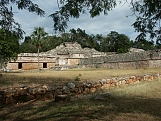
|
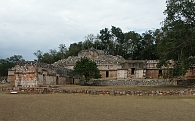
|

|
| |
|
| Doors are framed with multiple engaged columns and at the top of one corner there is a striking serpent's jaw with a human head emerging from the open mouth. (See below.) |
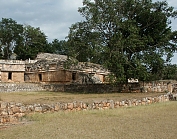
|
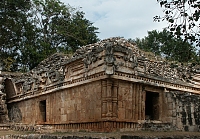
|
| |
|
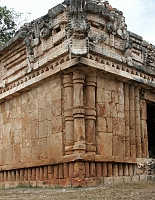 |
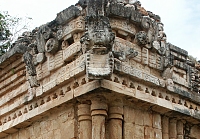
|
The corner with a human face emerging from a serpent's jawScholars suggest that the face probably represents a ruler whose rule is sanctified through the serpent. |
| |
|
Decorative Puuc friezeChaac masks, rosettes, frets, and embedded columns occupy the upper frieze while zigzags, representing the feathered serpent, border the base. |
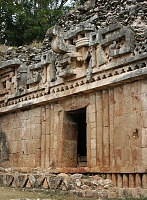
|
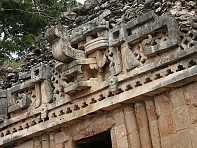
|
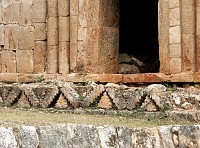
|
| |
|
The legs and feet (with elaborate boots) and loincloth of a figure |
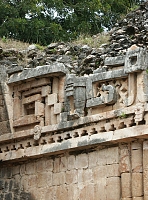
|
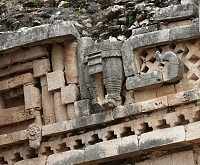
|
| |
|
The long facade with several entrancesThe principal facade faces south. Faces are embedded in the base and Chaac masks are above the doorways and at the corners. (See below.) |
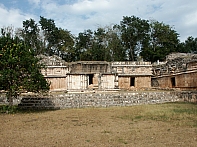
|
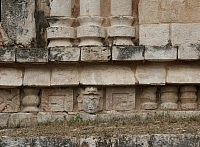
|

|
| |
|
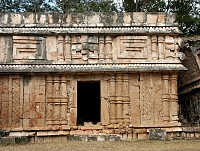
|
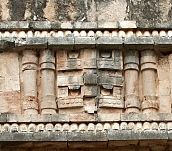
|
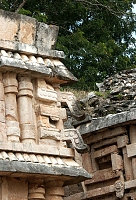
|
| |
|
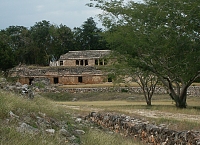
|

|
Temple of ColumnsThis is the most recently restored structure, so named because of the hundreds of embedded columns running along the frieze. Other buildings on the site are still not excavated. |


 Go to the Mexico Index.
Go to the Mexico Index. Click here to return to index of art historical sites.
Click here to return to index of art historical sites.
 Click here to return to index of artists and architects.
Click here to return to index of artists and architects.
 Click here to return to chronological index.
Click here to return to chronological index.
 Click here to see the home page of Bluffton College.
Click here to see the home page of Bluffton College.
